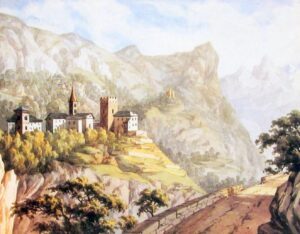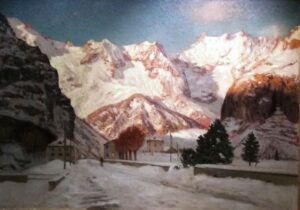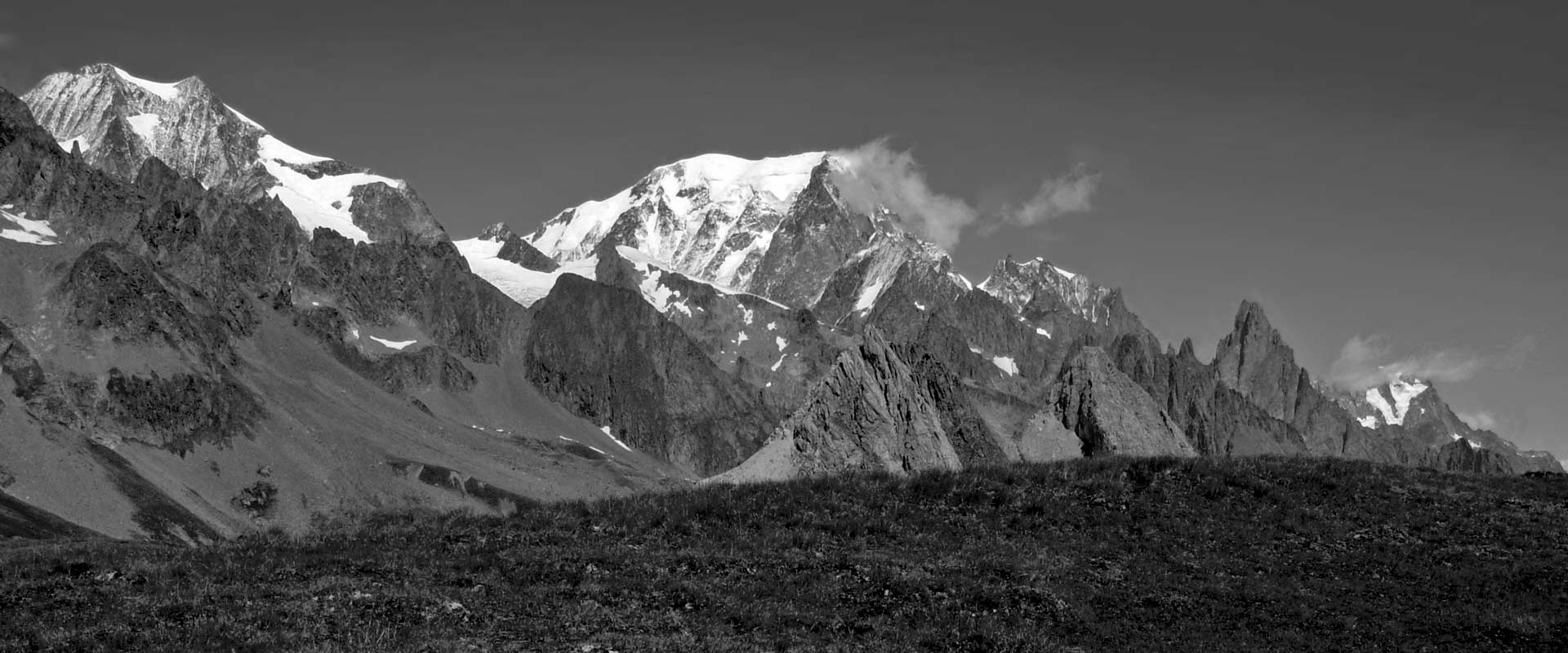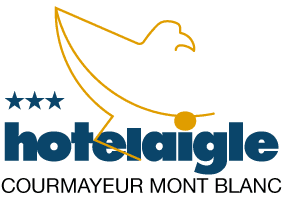There is a large literature dedicated to the Mont Blanc. On this page we collect excerpts from what has been produced in literature and poetry of all times to give voice to those who have chanted the beauty, the nature, the history, the stories, life, traditions, characteristics of this unique place.
Valle d’Aosta
 “The Aosta Valley, the most beautiful, the richest and the largest of the Hautes-Alpes. It is rich in herds, game, pastures, crops; fertile with chestnut, walnut, almond, and other fruit-bearing plants, especially vines, from whose grapes exquisite wines are pressed; and the fragrant incenses that send flowers and herbs to heaven, and the balmy scents of the pine woods, and the springs that spring up in the midst of pleasant fields, gladden the soul and fill it with infinite sweetness. But what makes man ecstatic are the giants of cliffs and ice that rise majestically; the contrast between the bursting of the glaciers and the roaring of the falls; between the white splendour of the snows and perpetual frosts and the dark and brilliant black of the tremendous and bizarre cliffs; between the shrill cry of the eagles and the peep of the sparrow; between the thick foliage of the dense forests and the gajo green of the prairies.”
“The Aosta Valley, the most beautiful, the richest and the largest of the Hautes-Alpes. It is rich in herds, game, pastures, crops; fertile with chestnut, walnut, almond, and other fruit-bearing plants, especially vines, from whose grapes exquisite wines are pressed; and the fragrant incenses that send flowers and herbs to heaven, and the balmy scents of the pine woods, and the springs that spring up in the midst of pleasant fields, gladden the soul and fill it with infinite sweetness. But what makes man ecstatic are the giants of cliffs and ice that rise majestically; the contrast between the bursting of the glaciers and the roaring of the falls; between the white splendour of the snows and perpetual frosts and the dark and brilliant black of the tremendous and bizarre cliffs; between the shrill cry of the eagles and the peep of the sparrow; between the thick foliage of the dense forests and the gajo green of the prairies.”An excursion to the Dente del Gigante and descent to Chamonix
 “Impossible to describe is the spectacle that awaits the traveller on the excursion of Mont Fréty and the Col du Gigante, once he reaches the summit, something that only the bravest can reach. As soon as dawn begins, you walk along the Saxe baths, leave the village of Entrèves on the left and cross the stream at the village of La Palu. Here the climb begins, and after three hours of walking you are at the top of Mount Fréty, where the guides of Courmayeur had a small house called the Pavillon built. The panorama that presents itself to the eye is already magnificent in itself; an endless number of high mountains line up before the observer, of which the most remarkable are: the Aiguille Rouge, the Aiguille del Gigante, the Grande Jorasse, the Mont-Vélan, the Colle Ferret, the Grivola, the Mont Blanc. He who desires more vigorous sensations, leaves his mount at the Pavillon, and armed with a long staff, climbs the Giant’s Hill. It takes another three hours to make this climb which is painful but not dangerous, and those with good legs and a good head easily reach the top. Once there, you rest for a while: the air is cold, alive, penetrating. The height is 3412 meters; everything is naked, deserted; the lungs breathe another element, man becomes light, airy; it seems to us that an unknown force wants to plunge him into the abyss; no sign of life; not plants, not woods, except for a few meagre lichens; No birds, no insects… nothing… than the bare rock, struck by the vehemence of the elements. Somewhat recovered from fatigue, you can contemplate one by one the surrounding wonders: under your feet, at a depth of 3000 meters, the Val Ferret, the Veni Valley, Courmayeur, the pastures of Pré-Saint-Didier, the Allée-Blanche with its glaciers, its lakes, its streams.
“Impossible to describe is the spectacle that awaits the traveller on the excursion of Mont Fréty and the Col du Gigante, once he reaches the summit, something that only the bravest can reach. As soon as dawn begins, you walk along the Saxe baths, leave the village of Entrèves on the left and cross the stream at the village of La Palu. Here the climb begins, and after three hours of walking you are at the top of Mount Fréty, where the guides of Courmayeur had a small house called the Pavillon built. The panorama that presents itself to the eye is already magnificent in itself; an endless number of high mountains line up before the observer, of which the most remarkable are: the Aiguille Rouge, the Aiguille del Gigante, the Grande Jorasse, the Mont-Vélan, the Colle Ferret, the Grivola, the Mont Blanc. He who desires more vigorous sensations, leaves his mount at the Pavillon, and armed with a long staff, climbs the Giant’s Hill. It takes another three hours to make this climb which is painful but not dangerous, and those with good legs and a good head easily reach the top. Once there, you rest for a while: the air is cold, alive, penetrating. The height is 3412 meters; everything is naked, deserted; the lungs breathe another element, man becomes light, airy; it seems to us that an unknown force wants to plunge him into the abyss; no sign of life; not plants, not woods, except for a few meagre lichens; No birds, no insects… nothing… than the bare rock, struck by the vehemence of the elements. Somewhat recovered from fatigue, you can contemplate one by one the surrounding wonders: under your feet, at a depth of 3000 meters, the Val Ferret, the Veni Valley, Courmayeur, the pastures of Pré-Saint-Didier, the Allée-Blanche with its glaciers, its lakes, its streams.

Book now
or
fill in and submit the following booking form

